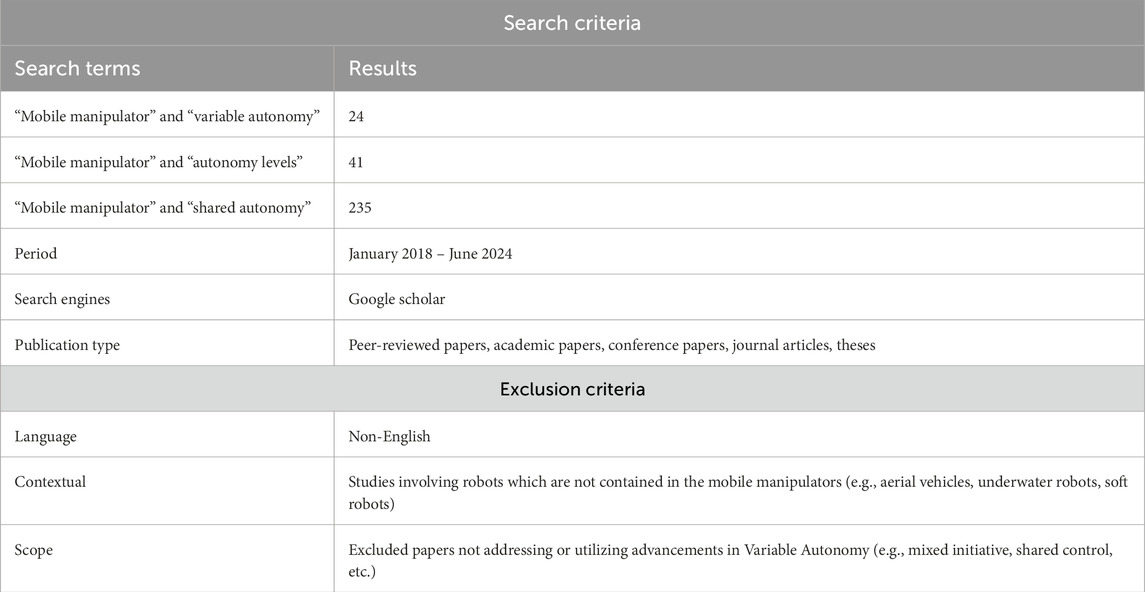This article surveys the state of the art in variable autonomy for mobile manipulators, with an emphasis on hazardous environments such as nuclear decommissioning, search and rescue, and battery recycling. We synthesise how human-robot teaming strategies adapt autonomy levels to operator workload, communication delays, and mission uncertainty.

Key Themes
- Cognitive workload: Many systems struggle to balance autonomy with the operator’s ability to intervene. We document mitigation strategies such as adaptive interfaces and shared control primitives.
- Communication constraints: Time delays, bandwidth limits, and packet loss degrade teleoperation. The review highlights predictive models and local autonomy buffers that keep robots responsive.
- Whole-body coordination: Future research should treat locomotion and manipulation jointly, enabling robots to reposition themselves while handling large objects in tight spaces.
Research Gaps
- Limited benchmarking across domains makes it hard to compare autonomy policies.
- Few studies integrate large language models or immersive interfaces into variable autonomy loops, leaving room for richer human-robot dialogues.
- Whole-body variable autonomy is still emerging; we outline directions for unifying motion planning with intent prediction.